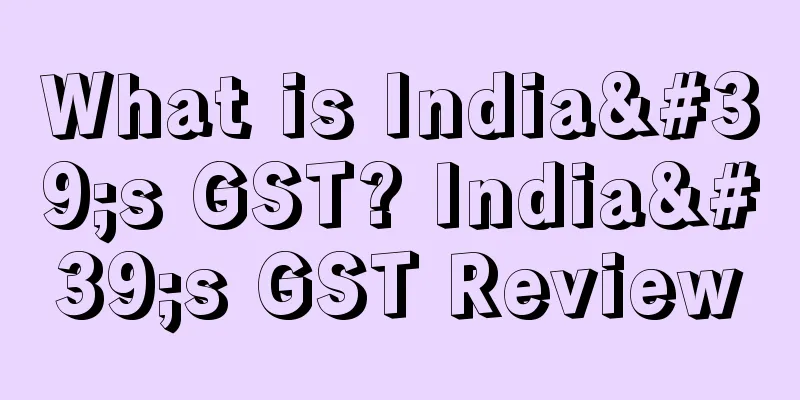What is India's GST? India's GST Review

|
The full name of GST is Goods and Services Tax, which can be understood as consumption tax here. Because it only taxes the consumption link, only when the goods are consumed, will taxes be levied, and a uniform tax rate is applied across India. It is similar to China's value-added tax and Europe's VAT (Value Added Tax). GST consumption tax 1. The origin of GST On July 1, 2017, India officially implemented the new national tax system GST. This tax reform was called "the largest tax reform since the founding of India". It simplified the tax system, unified the consumption tax collection system, and avoided double taxation when goods were circulated. It can be said that it was from this tax reform that the door to cross-border e-commerce was opened to enter the Indian market.
2. Basic tax rate GST is divided into five basic tax rates according to the nature of the goods: 0.5%, 12%, 18%, and 28%. The platform's hot-selling products are mainly distributed in the 5%-28% range, with 18% being the highest. 3. How to apply for Indian GST First, you need to have a valid mobile phone number (Indian number), email address and PAN card linked to business trade to obtain a temporary registration number (TRN). 1. Log in to the GST official website - gstes.com/, select Service > Login > Register 2. Fill in the GST application form Register for digital (electronic) signature certification. When verifying GST applications, applicants are required to digitally sign the forms. Install Emsigner to sign GST forms. Download and install DSC Signer from emsigner.com. 4. Classification GST is divided into three categories: CGST, SGST and IGST, depending on whether the goods or services are circulated within or across states in India: 5. Can various types of GST offset each other? When offsetting, it is necessary to offset according to the type of tax. GST of the same type should be offset first. If it is not enough, other GST can be offset. The order is: CGST should be offset first, followed by IGST, and SGST cannot be offset; SGST should be offset first, followed by IGST, and CGST cannot be offset; IGST should be offset first, followed by CGST, and finally SGST. Let's take headphones as an example to calculate: References |
>>: What is the Wish All-Star Merchant Logo? Wish All-Star Merchant Logo Review
Recommend
What is Vps? Vps Review
Vps, that is, using virtual server software (such ...
Price increase across the board! USPS officially announced…
According to foreign media reports, on January 24,...
What is Move Loot? Move Loot Review
Move Loot is a one-stop service store. As long as ...
What are Flat Ads? Flat Ads Review
Flat Ads is the world's leading mobile adverti...
What is Key for Garage? Key for Garage Review
On April 23, 2019, Amazon announced that it would ...
What is Shopee's delayed shipment rate? Shopee's delayed shipment rate evaluation
Shopee's delayed shipment rate refers to the s...
What is Ptengine? Ptengine Review
Ptengine is a complete marketing and analytics pla...
The tariff threshold has helped Chinese sellers to attack Amazon! After local businesses were eroded, the United States began to get anxious
Chinese sellers have always been the top players o...
Caught in batch video verification? The service provider asked for an exorbitant price, which is actually...
Recently, there has been a surge in video verifica...
How to advertise new products on Amazon?
1. When a new product is just launched, it is not ...
What is ClickFunnels? ClickFunnels Review
ClickFunnels is a tool for creating landing pages....
Don’t get a red card! Review deletion rules summary
It's like going back to when the product was f...
What is JD CENTRAL? JD CENTRAL Review
JD CENTRAL, an online retail platform jointly crea...
Wayfair lost $378 million in the second quarter! The number of active users has dropped significantly!
<span data-docs-delta="[[20,"获悉,近日美国家居电商Wa...









